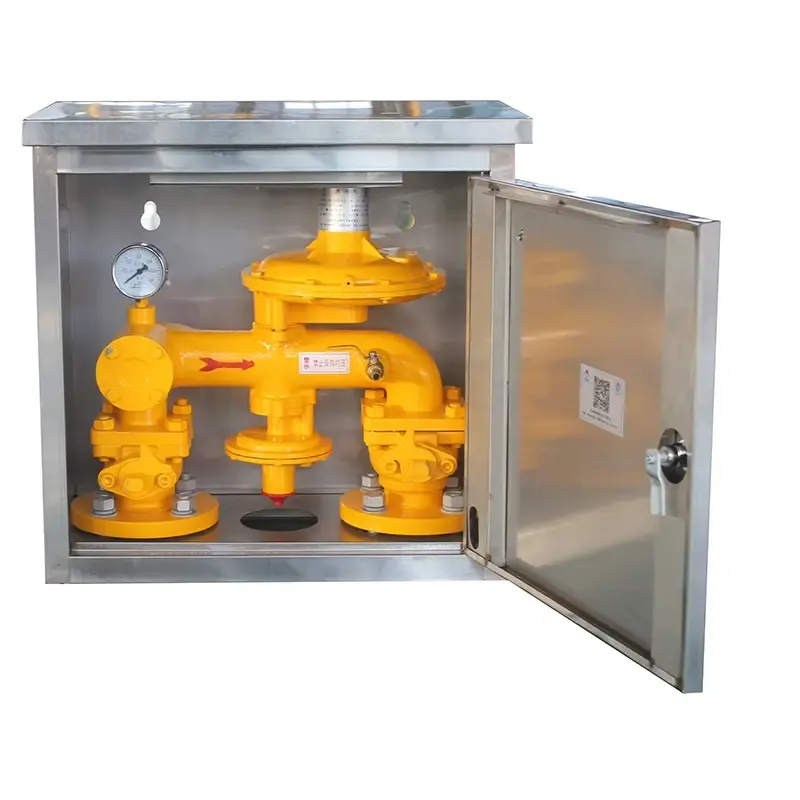
Nov . 09, 2024 05:00
Back to list
Gas Pressure Regulation for Enhanced Safety and Efficiency in Various Applications
Understanding Gas Pressure Reducing Valves
Gas pressure reducing valves (PRVs) are essential components in various industrial and residential applications. They play a crucial role in controlling the pressure of gas delivered from a high-pressure source to a lower, more manageable pressure suitable for use in appliances, machinery, or heating systems. This article explores the fundamental concepts, operation, and significance of gas pressure reducing valves.
What is a Gas Pressure Reducing Valve?
A gas pressure reducing valve is a specific type of regulator designed to decrease the pressure of gas flowing from a storage tank or pipeline to a predetermined, lower pressure. These valves are crucial for ensuring the safe and efficient operation of gas-powered equipment, such as furnaces, boilers, and industrial machinery.
How Does a Gas Pressure Reducing Valve Work?
The fundamental operation of a gas pressure reducing valve is based on the principles of fluid dynamics and mechanical regulation. When high-pressure gas enters the valve, a diaphragm within the unit reacts to the pressure. This diaphragm moves in response to the gas pressure, opening or closing a valve seat to control the flow of gas.
1. Inlet Pressure The gas enters the valve at a high pressure. The operator sets a desired outlet pressure, which is typically lower than the inlet pressure.
2. Regulation Mechanism As gas flows through the valve, the diaphragm senses the outlet pressure. If the outlet pressure exceeds the set point, the diaphragm moves to close the valve, restricting gas flow. Conversely, if the pressure drops below the desired level, the diaphragm opens the valve, allowing more gas to flow through.
3. Adjustment and Control Many PRVs come with adjustable springs or control dials, allowing users to modify the outlet pressure according to their specific requirements. This adaptability is particularly important in varied applications, from residential heating systems to large industrial processes.
Significance of Gas Pressure Reducing Valves
The use of gas pressure reducing valves is vital for several reasons
gas pressure reducing valve

1. Safety High-pressure gas can pose significant risks, including explosions, leaks, and damage to appliances. PRVs mitigate these risks by ensuring gas is delivered at safe pressures.
2. Efficiency Reducing gas pressure to optimal levels enhances the efficiency of gas usage in appliances, leading to improved performance and energy savings. This efficiency also lowers operational costs.
3. Equipment Protection Many gas-powered devices are designed to operate within specific pressure ranges. By using a PRV, users can protect their equipment from damage caused by excessive pressure.
4. Regulatory Compliance In many regions, regulations require the use of pressure regulators in gas installations to meet safety and operational standards. Compliance is crucial for both safety and legal reasons.
Applications of Gas Pressure Reducing Valves
Gas pressure reducing valves find applications across various sectors, including
- Residential Heating In home heating systems, PRVs ensure that natural gas or propane is delivered at the correct pressure to furnaces and water heaters.
- Industrial Processes Many manufacturing processes rely on controlled gas pressures for machines that require specific operational conditions, such as gas turbines or kilns.
- Laboratories In research and laboratory settings, PRVs are essential for experiments that involve gases, ensuring accurate and safe delivery of pressurized gases.
Conclusion
Gas pressure reducing valves are integral components that ensure the safe and efficient use of gas across multiple applications. By controlling and regulating gas pressure, these valves not only enhance safety and efficiency but also protect valuable equipment from potential damage due to excessive pressure. As industries and technologies evolve, the design and functionality of PRVs will continue to improve, playing a crucial role in the future of gas handling and distribution systems. Understanding their operation and significance is vital for anyone involved in the design, installation, or maintenance of gas systems.
Latest news
-
Safety Valve Spring-Loaded Design Overpressure ProtectionNewsJul.25,2025
-
Precision Voltage Regulator AC5 Accuracy Grade PerformanceNewsJul.25,2025
-
Natural Gas Pressure Regulating Skid Industrial Pipeline ApplicationsNewsJul.25,2025
-
Natural Gas Filter Stainless Steel Mesh Element DesignNewsJul.25,2025
-
Gas Pressure Regulator Valve Direct-Acting Spring-Loaded DesignNewsJul.25,2025
-
Decompression Equipment Multi-Stage Heat Exchange System DesignNewsJul.25,2025

